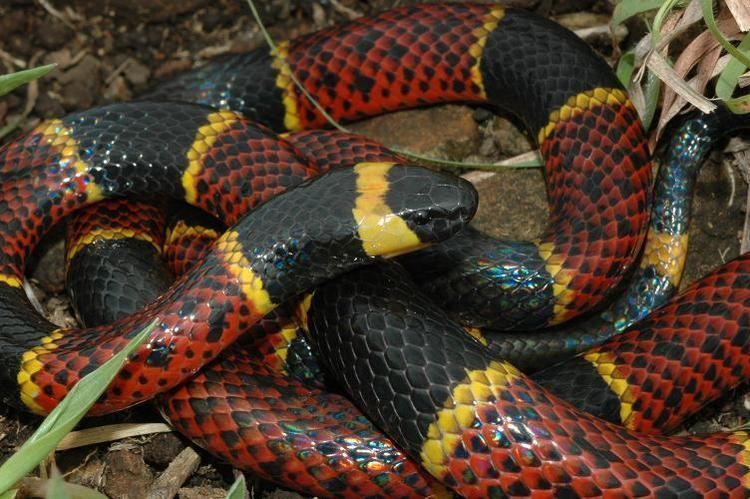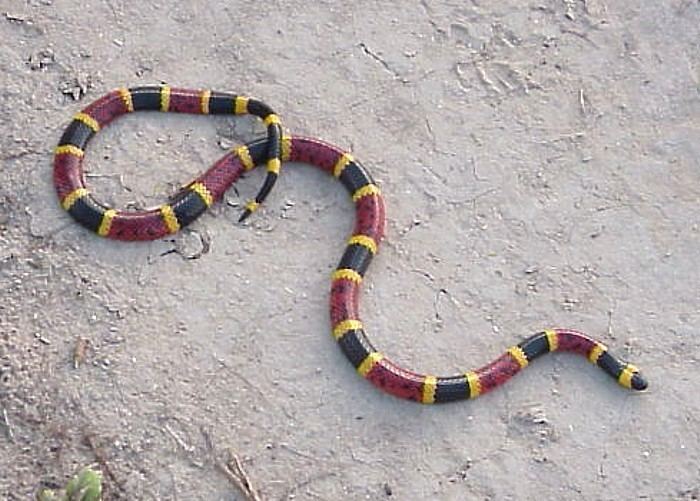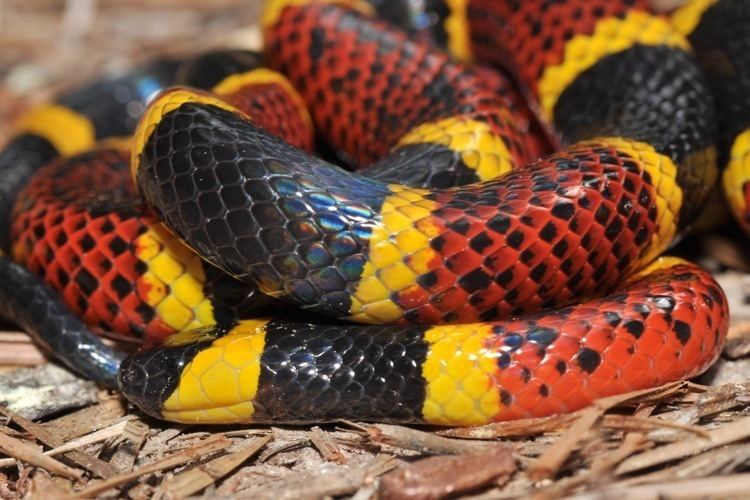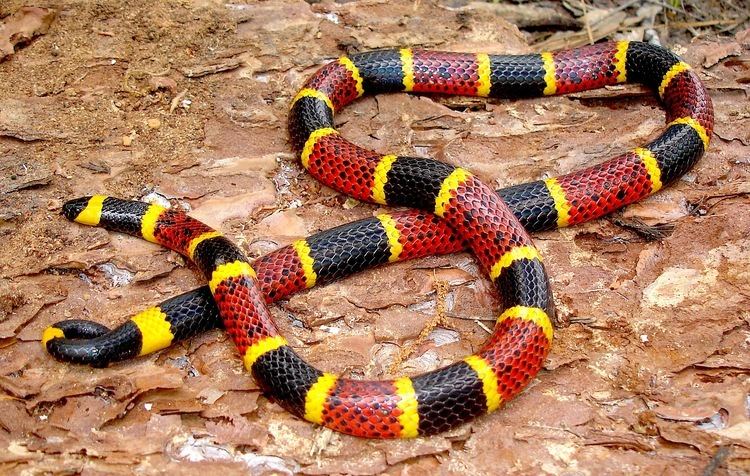Subphylum Vertebrata Suborder Serpentes Scientific name Micrurus tener Rank Species | Phylum Chordata Higher classification Micrurus | |
 | ||
Similar Snake, Micrurus, Micrurus fulvius, Reptile, Micruroides euryxanthus | ||
Micrurus tener is a species of venomous elapid snake. It is a relatively common and widespread snake found in the Southern United States and northeastern and central Mexico. There are four subspecies; the nominal subspecies found in both the US and Mexico is commonly known as the Texas coral snake.
Contents
- Texas coral snake micrurus tener
- Geographic range
- Description
- Behavior
- Diet
- Venom
- Subspecies
- Taxonomy
- References

Texas coral snake micrurus tener
Geographic range

M. tener ranges from the southern United States south to northeastern and central Mexico. It inhabits the states of Texas, Louisiana, Arkansas, Tamaulipas, San Luis Potosí, Guanajuato, Querétaro and Morelos.
Description

The Texas coral snake has the traditional coloration associated with coral snakes, with black, yellow and red banding. It is capable of growing to 40 in (100 cm) in total length (including tail), but most are closer to 24 in (61 cm). Males are typically smaller than females. They have smooth dorsal scales, a rounded head, and eyes with round pupils. Albino (lacking black pigment) and anerythristic (lacking red pigment) specimens have been found in the wild.
Behavior

All coral snakes are shy, secretive animals, typically nocturnal. They spend most of their time hiding in leaf litter, under logs.
Diet

Their primary diet consists of other snakes, primarily earth snakes, and other small fossorial species. They will also occasionally eat small lizards, but the consumption of rodents by coral snakes is rare.
Venom

Texas coral snake venom is a powerful neurotoxin, causing neuromuscular dysfunction. Up until 2006, no deaths from coral snake bites have been reported since the 1960s in the United States. The coral snake resembles other, nonvenomous snakes as a form of Batesian mimicry. This resemblance of colors has resulted in the popular saying, "Red on black, venom lack. Red on yellow, deadly fellow." Because of the low profit yields, the production of coral snake antivenin has been discontinued for several years. Prior to the availability of antivenin during production, the fatality rate of coral snake envenomations is estimated at 10%, and death was primarily due to respiratory or cardiovascular failure as a result of paralysis induced by the neurotoxic venom.
A coral snake (genus Micrurus) is proteroglyphous, meaning it has a pair of hollow, small, fixed fangs in the front of its upper jaw, through which the venom is injected and encouraged via a chewing motion. Due to this method of venom delivery, a coral snake must bite and hold on for a brief time to deliver a significant amount of venom, unlike a viper, which can simply strike and introduce a large amount of venom at once. Many bites from coral snakes do not inject any venom at all, and the small size of coral snakes makes their ability to bite humans rather limited. However, a bite from any coral snake should be considered extremely serious, and medical treatment should be sought immediately. This is because symptoms of envenomation are known to sometimes delay manifestation for as long as 12 hours, but once present, often progress rapidly.
Subspecies
There are four recognized subspecies of Micrurus tener:
Nota bene: A trinomial authority in parentheses indicates that the subspecies was originally described in a genus other than Micrurus.
Micrurus tener tener is found in both the US and Mexico, whereas the other subspecies are endemic to Mexico.
The subspecific name, fitzingeri, is in honor of Austrian herpetologist Leopold Fitzinger.
Taxonomy
The Texas coral snake was once considered the same species as the Eastern coral snake, Micrurus fulvius, but more recent research has determined that it has enough morphological differences to be considered its own species.
